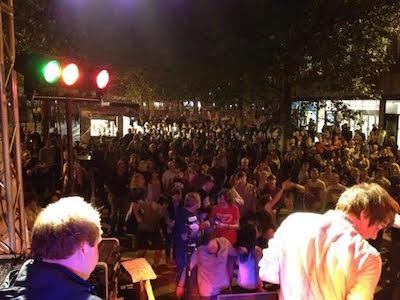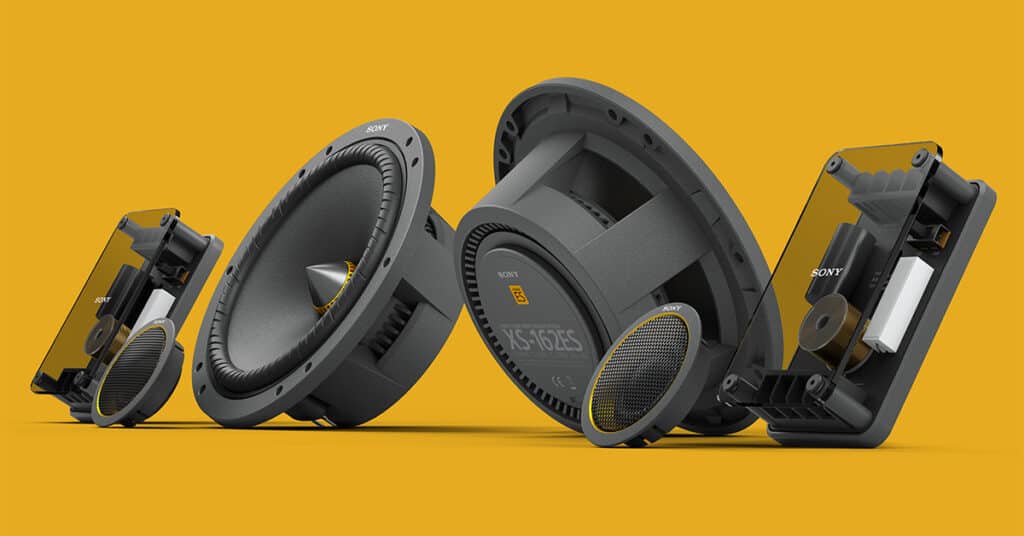Music production can take on a whole new meaning and bring new life to your track when you opt for unconventional techniques. Consider utilizing non-traditional music-making methods or finding sounds made by objects other than an instrument.
You’ve likely heard the expression that accidents or mistakes can produce the best results. The same can go for recordings. Below you’ll discover some of the risks and decisions musicians can make with audio interfacing software and how inspiration and thinking outside the box can make a good record even better.
There are many experimental and unconventional music production techniques that can be used to create unique and interesting sounds. Some examples include:
Circuit bending: This technique involves modifying electronic devices, such as toys or keyboards, to create new and unexpected sounds.
Field recording: Field recording involves recording sounds from the natural environment, such as birds, water, or traffic, and then incorporating those sounds into a musical composition.
Granular synthesis: This technique involves taking small samples of sound and manipulating them in various ways, such as stretching, looping, or reversing them, to create new sounds.
Modular synthesis: The technique involves using a modular synthesizer, which is a type of synthesizer that is made up of individual modules that can be connected and configured in various ways to create different sounds.
Musique concrète: It is an experimental music genre that involves manipulating recorded sounds, such as spoken word, animal sounds, and everyday sounds to create music.
Tape looping: This technique involves recording sounds onto a tape and then looping the tape to create a repeating pattern.
Using unconventional instruments: Incorporating unique instruments like Theremin, Ondes Martenot, or handpans can add an otherworldly touch to the music.
Using generative music software: Generative music software allows the creation of music through the use of algorithms.
These techniques can be used to create unique and interesting sounds that are difficult to achieve with traditional music production methods. However, it’s important to note that these techniques require a high level of skill and knowledge to use effectively.
Going back into the music world, here are some of the more experimental and unconventional music production techniques that famous artists have used that has given them a massive payoff.
The Crystals “Da Doo Ron Ron”
Phil Spector created inspirational recording techniques that were used by many sound engineers and music production gurus in later years. His most famous contribution was the unconventional “Wall of Sound” approach to boost up his audio.
When you combine multiple performances of the same music over and over you create layers of sound. This layering technique is commonly used in music production today, but at the time the concept was very new. Spector took instruments like pianos or guitars and created multiple overdubs for the “wall” sound.
The song “Da Doo Ron Ron” is a perfect example of this method. The approach that Spector used in the production gave the sound a more stand-out boost on radios, which gave people a better opportunity to hear it.
The Beach Boys “Good Vibrations”
Music production has come a long way, but some of these musicians created new ways of thinking about how to make music. Brian Wilson of The Beach Boys is such an artist since he decided to record his tracks in multiple pieces across many sessions in the studio. Then, he took the splices and put them all together to make a complete track.
The experimentation with tape techniques demonstrates that you don’t have to sing a song from start to finish, but rather, you can record different parts of the song at different times. Wilson also used unheard-of instruments to create unique sound effects, as the Theremin heard in the song “Good Vibrations”. It sounds like a high-pitched wail and almost promotes a haunting quality to the music.
Paul Tanner later using the same concept made an instrument called the Tannemin, which is a synthesizer similar to a Theramin. The design of it was easier to use, and the sound was something unheard of at the time, but Wilson’s creativity made it recognizable for any and all who listened to the song.
Queen “Bohemian Rhapsody”
Freddy Mercury is another stellar example of not shying away from using more unconventional sounds in music production. The ambitious blend of the ballad, rock, and opera in “Bohemian Rhapsody” was already groundbreaking, but added in the a cappella sections with the ping-pong technique that bounced the sound.
The guitar used over-dubs and doubled parts for a thicker sound, but the ping-pong recording is what helped take it to the next level. Most songs use different tracks for each instrument and vocals where they are combined. But with these songs the tracks were recorded then bounced all tracks.
Now that you’re aware of how some musical geniuses had the idea to be experimental, you’re probably curious how you can do it yourself. Technology and digital audio make it easier than ever to take some risks in your production techniques without completely messing up the audio, so you can do more trial and error.
Using experimental and unconventional sounds in music production can add a unique and interesting element to your music. Here are a few tips on how to use these sounds effectively:
- Start with a concept: Before you start experimenting with different sounds, it’s important to have a clear idea of what you want to achieve. This could be a specific theme or mood that you want to convey, or a specific sound that you want to incorporate into your music.
- Experiment with different sounds: Try different techniques and sounds to see what works best for your concept. For example, you could try circuit bending a toy to create a new sound, or recording and manipulating field recordings to create a unique texture.
- Incorporate unconventional instruments: Incorporating unique instruments can add an otherworldly touch to the music.
- Use effects and processing: Once you have your experimental and unconventional sounds, use effects and processing techniques, such as reverb, delay, and distortion, to shape and enhance the sounds to fit your concept.
- Keep it balanced: While experimental and unconventional sounds can add a lot of interest to your music, it’s important to balance them with more traditional sounds to create a cohesive composition.
- Consider context: Consider how the experimental and unconventional sounds will be perceived in the context of the rest of the music. Will they be fitting or will they be too unexpected for the listener?
- Have fun: Experimenting with sounds can be a lot of fun, so don’t be afraid to try new things and take risks. You never know what you might come up with!
Use an EQ Cheat Sheet to get your best sounds for your instruments and vocals, and consider instilling some of these more unique methods to your production on the back end:
- Key change – changing a key can make your music far more dramatic, so think about moving it to a different harmonic center and see how it feels.
- Layering – is far more common nowadays than it was back then, multiple sounds and music samples together help make your music tracks sound more powerful, but can also add an element of mood that you hadn’t thought of before.
- Noises – some people feel that unwanted sounds, extra hums, or clicks can ruin a piece of music, but think about how it might add to a particular tune. For example, If you’re strictly utilizing instrumental tracks as a creator and have tracks using YouTube music licensing – maybe you can work with the musician directly to customize your own unique track where you can make those pops, clicks, and other sounds a part of the music. You’d be amazed at how they can change the feel of a song and help you stand out on the platform.
- Gates – going in the other direction, gates help to eliminate unwanted noise. You can be more creative with gates by using them non-traditionally or routing to other sources.
- Audio effects – consider using effects to enhance existing music or sounds. You can easily apply some trial and error and see how it varies the overall track.
- Beats – manipulating the tempo in your tracks can be a creative way to see how rhythms and melodies pave the way to another – many artists can use this method when going from one song to another. It could help make an impact, particularly when you use the same technique in a live performance.
- Compression – suppressing a sound can sometimes give your music a wanted effect.
- Human voice – the human voice has an amazing way of mimicking sounds, beats, and melodies. If the digital audio effect isn’t giving you the right sound, consider making it yourself and creating a new effect or hiring a new singer to bring a different sound into a track.
There are just some ways you can manipulate your audio by experimenting with new sounds, effects, and more. If you work with a band and you’re laying down a track record even when you’re not trying to put a song together.
Sometimes a jam session can create some great music. Things that are spontaneous are a great way to explore what your music is truly capable of doing.
The most innovative studio experiments and unconventional ways of creating a groundbreaking track come directly from you and your imagination. There is no limit to the number of opportunities and possibilities that music production can give you, so don’t be afraid to try it all and see what sticks!
Words: Nicole McCray



